This major feature for RF Explorer Spectrum Analyzers is now available as public Beta release.
We have been working hard the last few months to embed a huge list of features, including the ability to create your own decoder Add-ins:
- Capture OOK/ASK modulation data packets at any frequency supported by your device model (in the range 15-2700MHz)
- Filter and trim noise out of the data capture
- Included decoders for PT2264 remote controls and Oregon Scientific weather stations
- Advanced zoom, contextual menus, text, configuration settings for sample rate and frequency.
There are so many features included, the only way to elaborate them is through an accompanying guide included in the software package.
Download available in the BETA area of the download page.
How the RF sniffer works
You can detect RF transmission and decode data either manually or automatically.
Most gadgets and devices like the ones depicted below can be easily captured and processed by RF Explorer sniffer tool:

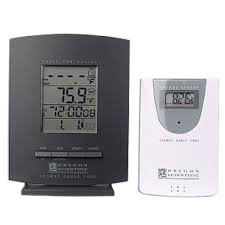
The RF transmission would look like a train of pulses at first sight, but it can include a large number of unusable noisy data, as well as duplicated data packets transmitted by the gadget.
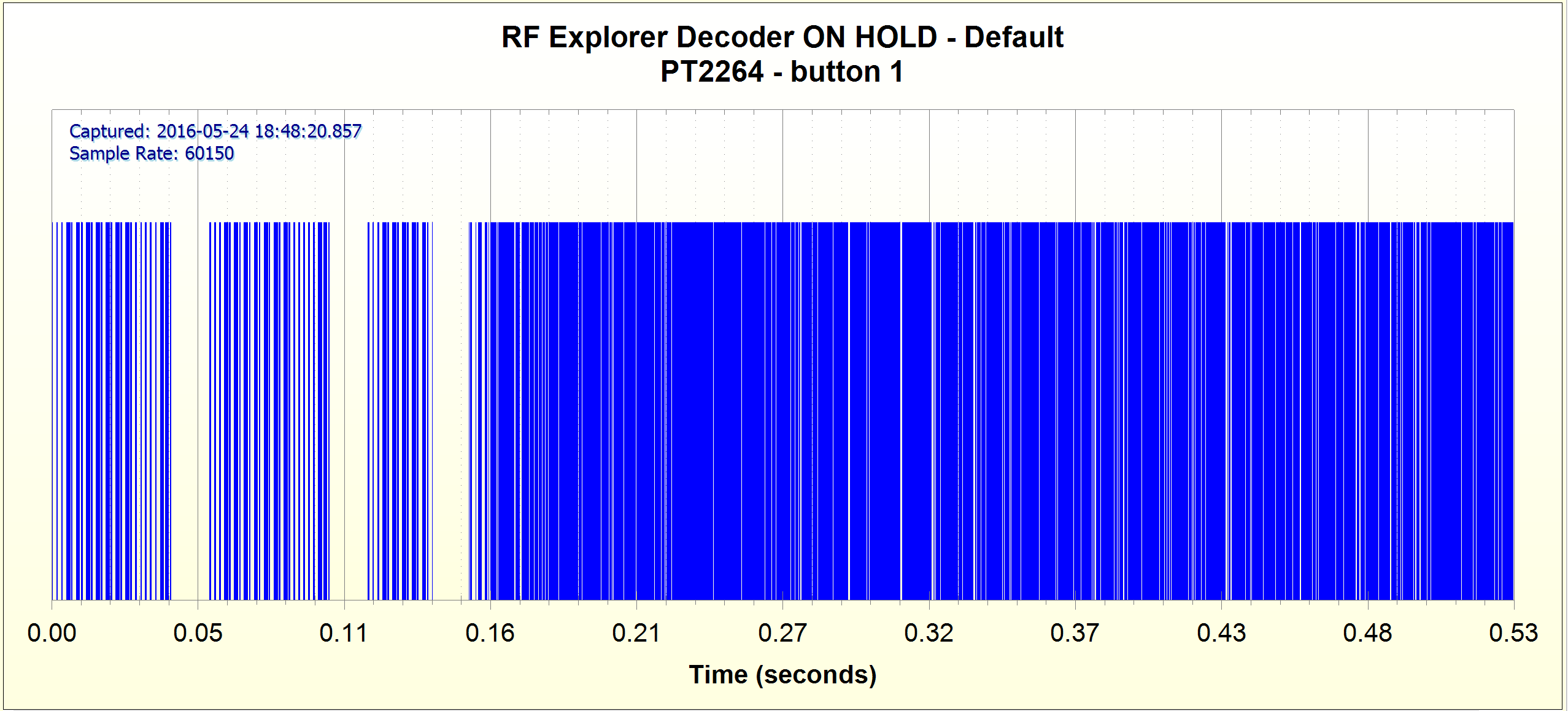
Thanks to RF Explorer Sniffer tool advanced features, you can easily remove unwanted noise and detect envelope digital modulated signal, so it can be interpreted according to available documentation or reverse engineering.
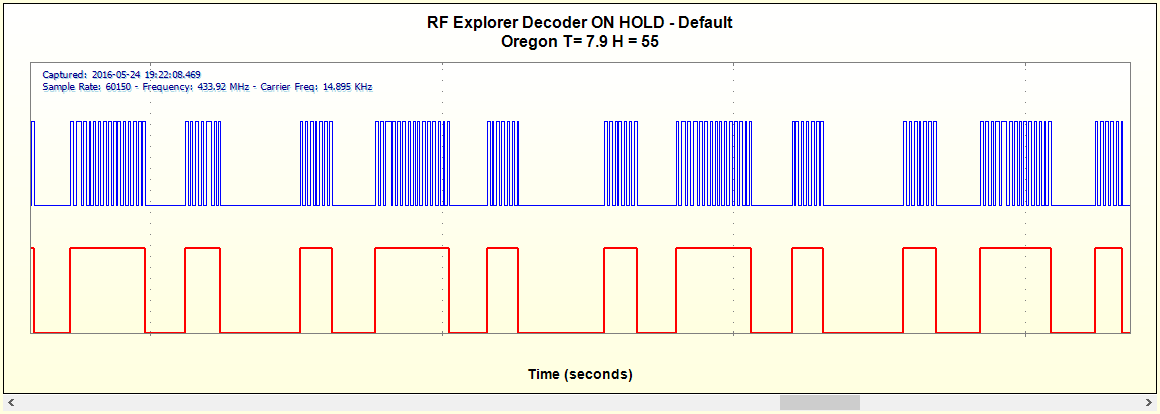
If the device transmit a protocol currently supported by one of the included Decoders, the RF Explorer Sniffer will do all decoding with a single click:

Using this extremely advanced feature, checking any RF transmission is now a trivial task.
Below is a fully decoded RF remote control data packet including address and data values when pressing button [1] of that particular remote control. A good example of use for this would be to adjust your remote control receiver to the right address to react to that remote control.
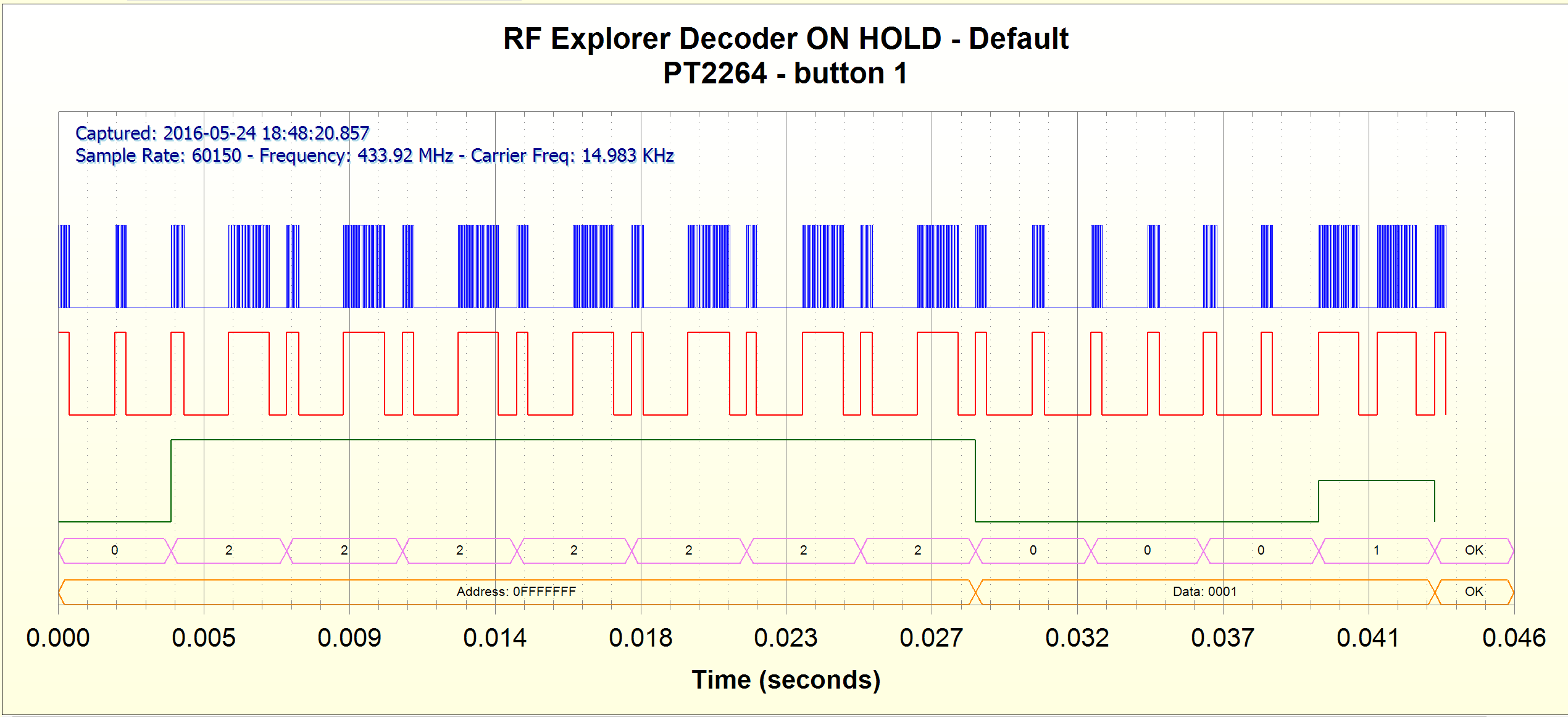
And this is an example of fully decoded Oregon Scientific Weather Station sensor transmitting 7.9C temperature and 55% humidity.
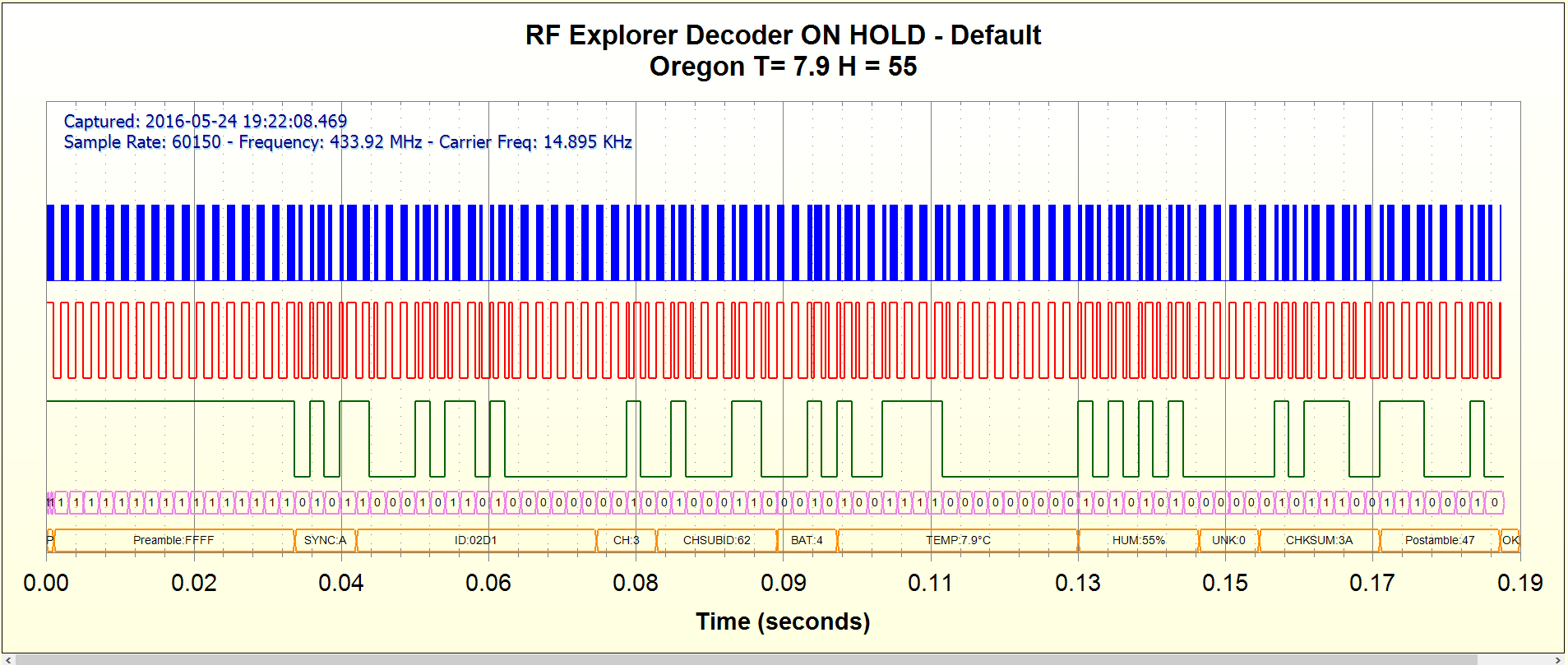
This useful tool enables RF Explorer models such as 433M (by a mere $99) assist you on debugging RF projects, detect wanted and unwanted transmissions and interpret any gadget at hand. As opposed to other tools available, you do not need to disassemble or connect cables to the RF gadget in order to detect what is being transmitted: your RF Explorer connected to a Windows PC is all you need for the antenna capture and sniff around!
Developing your own Decoder add-ins
By using a simple yet effective Add-in model, RF Explorer for Windows can be easily extended with your own Decoders.
You can develop decoders in any language, samples are provided in Python and C#, but others like Perl, VB, C/C++, Java and pretty much any environment you are familiar with can do the work just fine. The only requirement is to produce a command line tool, following certain convention for data communication between the Add-in and the RF Explorer for Windows tool.
Happy hacking!
